By: Toby Hagon
From using a regular powerpoint to plugging into a wallbox, here’s what you need to know about charging an electric car at your home.
Never having to visit a petrol station again is one of the big attractions of owning an electric car.
But there are a few things you’ll need to know before you can roll down the driveway, plug in and let the electrons flow.
You need to ensure you have the appropriate hardware, that your house can cope with the charging challenges and that you’ll be able to get a fast enough charge to meet your driving requirements.
Here’s everything you need to know about charging your EV at home.
RELATED:
How much does it cost to charge an EV? »
AC versus DC
High speed public charging is supplied by DC (or direct current) electricity.
All our home electricity is AC, or alternating current, and the charge supplied is much slower, because it’s provided at a lower power level but also because it needs to go through an onboard charger on the car, which will then convert it back to DC energy to be stored in the battery.
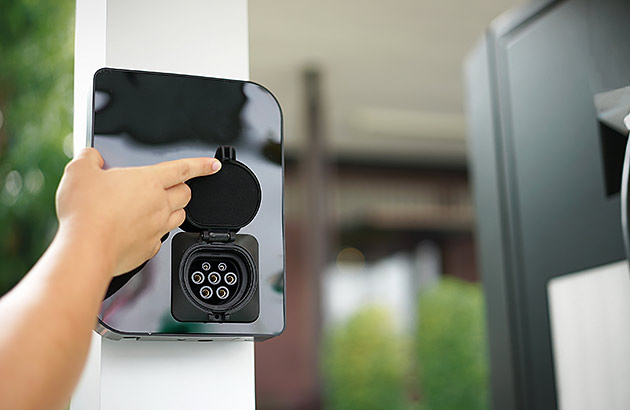
Any time you charge an EV at home, it will be using an AC charging plug.
All vehicles that can be recharged externally – battery electric vehicles (BEVs) and plug-in hybrids (PHEVs, but excluding regular hybrids) – can accept an AC charge. Most BEVs will also take a DC charge, although it’s far less common with PHEVs.
EV charging cables and connectors
Most EVs come with at least one cable, some of them two (although Tesla just removed all charging cables from its Model 3 and Y, the two most popular EVs in Australia).
The most basic cable that typically comes with an EV is a regular 230V adapter. On one end is a familiar three-pin plug and on the other end is a much larger, vaguely circular plug to slot into the charge port of your EV.
That charger allows charging from any powerpoint and is portable, so if you’re heading away for a weekend, you can take it with you and keep your EV topped up, provided the car can be parked within reach of a powerpoint.
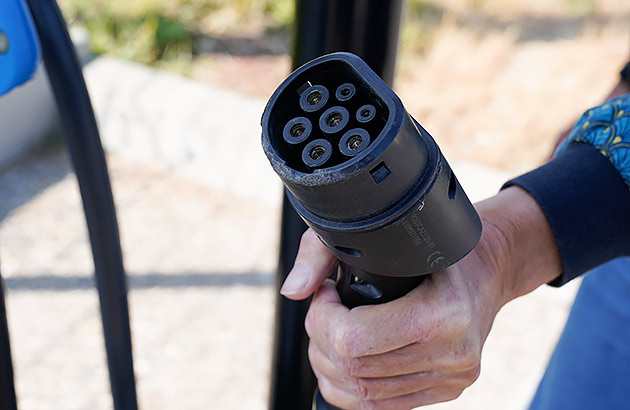
Another cable that is less common but is included with some EVs is a Type 2 to Type 2 plug. The Type 2 connector is that vaguely circular plug mentioned above. It is used by all new EVs and PHEVs sold in Australia (some older ones use different plug types).
A Type 2 to Type 2 connector allows you to use public AC chargers that require the owner to bring their own cable. They’re less common (usually reserved for shopping centres or carparks) but keeping one stashed in the boot can be handy for a top-up when you’re out and about.
Home powerpoints
Contrary to what some believe, every EV on the market can be charged from a home powerpoint. It just takes longer than using a wallbox or fast charger.
A regular household powerpoint puts out about 2.3kW of power. Usually about 2kW of that makes it to the car (there are always some losses when charging and some cars may also limit the charge rate).
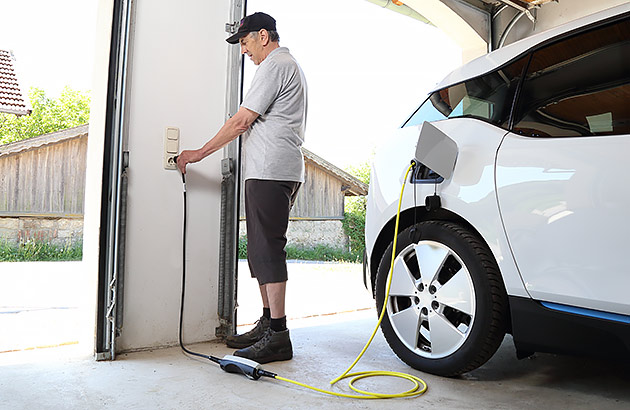
For an EV with a 60kWh battery pack that means it would take about 30 hours to perform a complete charge. For a bigger EV with an 80kWh battery, that time steps up to 40-odd hours.
While parking your car for more than a day may seem laughable to someone who drives regularly, it’s worth remembering that the 30 hours is for a full charge. In other words, you will have had to have driven 400-plus kilometres before needing that 30-plus-hour charge.
For someone who travels more like 40km per day – roughly the average distance travelled by the 20 million vehicles on Australian roads – the charge time is more like three or four hours.
So if you’re travelling less than 100km per day, you would be able to charge an EV overnight from a regular powerpoint. You just have to be vigilant with plugging it in and be patient for what will be a slow charge.
That regular charging is particularly important with a PHEV; most PHEVs have relatively short electric driving ranges (40-100km), so to get the full benefit, the car needs to be charged regularly – otherwise their fuel consumption goes up dramatically.Getting an EV wallbox installed
But there are faster options. Most EV owners will opt for a so-called wallbox charger (some luxury brands include an installed wallbox when you buy the car). As the name suggests, it’s a box that bolts onto the wall.
They’re available from independent retailers while many car brands also sell them. Some of the wallboxes you can buy from the dealer are generically available models rebranded.
A wallbox is connected to your home power supply and has a plug that connects directly to the charging port in your car. That plug will be a Type 2 plug, which fits all new EVs, Teslas included.
The advantage of a wallbox is it can provide much more power than a regular powerpoint.
Affordable wallboxes (less than $1,000) have a single-phase connection and supply about 7.4kW. However, some homes and local regulations may limit how much current can be supplied through a single phase, in turn reducing how much power the charger can supply.
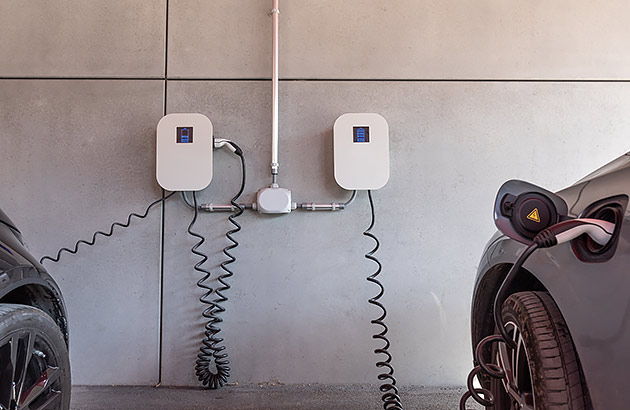
That’s where three-phase power can be advantageous. If you have a home already wired for three-phase power it gives you more options, including more powerful 11kW and 22kW chargers.
While some houses may be limited to, say, 4.6kW when connected to a single-phase supply, that same house may be able to deliver 11kW via a three-phase wallbox charger, which in turn puts less pressure on the grid.
This is where you’ll need an electrician to advise what your house is connected to, what the local regulations are and how much power you can ultimately draw.
While the temptation may be to choose a more powerful wallbox, it doesn’t necessarily make sense for many people. The advantages of a 22kW wallbox over an 11kW unit are negligible if you’re parking the car for more than seven or eight hours; the 22kW will get the car fully charged in a few hours, whereas the 11kW will take double the time.
Besides, most EVs are limited to accepting 11kW of AC charge (some even less), so there’s often no point putting in the more powerful charger. And if the house can supply the full 7.4kW from a single-phase charger then you’re unlikely to need any more than that to perform a full charge overnight on any EV currently on the market.
Free electricity
The Holy Grail of living with an EV is topping up with free electricity. For most people, that will be from home solar panels, after installation costs have been covered.
Many EV owners are already taking advantage of the energy being produced from their own panels.
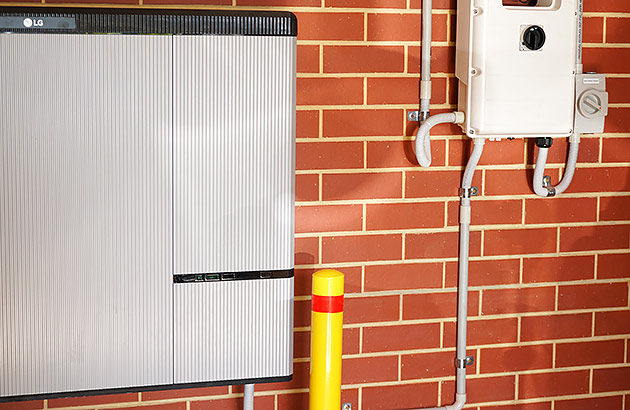
“We’re finding in Australia that the peak time for people charging is actually around midday … to take advantage of solar,” says Tim Washington, the founder of EV infrastructure installer JetCharge.
The challenge is ensuring you’re not sucking too much power, which could instead revert to pulling power from the grid rather than the panels you popped on the roof.
Washington says there are two options. The first is to slow the charge rate down to all but guarantee that it’s the solar panels doing the charging grunt work. The second is to invest in a solar match charger – pre-installation prices start at around $1,400, compared to around half that for a ‘dumb’ charger – to make the most of that solar energy.
“You can buy charging stations that specifically measure how much solar you’re exporting and matches the charge current of the car to match that export, so you’re basically not exporting anything [electricity] to the grid, you’re putting it all back in the car.”
Another option is to install a battery, which allows you to charge the car overnight when the sun is hiding. However, Washington points out that temporarily storing the power in an external battery before transferring it to the vehicle battery increases energy losses along the way.
“Discharging from the battery to another battery is not 100 per cent efficient,” he says. “You have losses when you store it in the [home] battery and then you have further losses when you go from the battery to the car.”
Electric car charging in apartment buildings
Around 2.5 million Australians – 10 per cent of the population – live in an apartment.
Installing EV chargers in unit blocks isn’t as easy – or affordable – as a house. That’s because it doesn’t always matter what you want to drive, it can also come down to what your neighbours want via the strata committee.
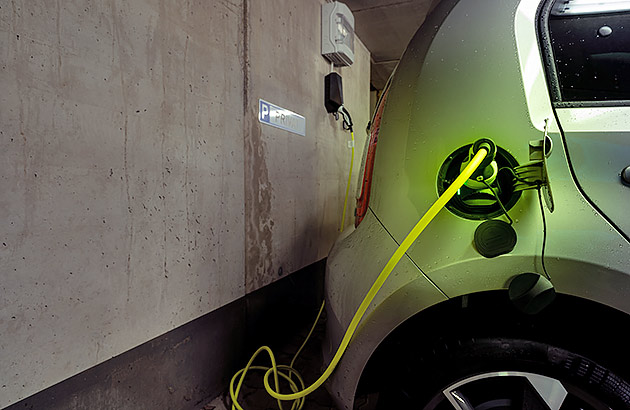
But interest in charging infrastructure is ramping up, according to Taryn Linfoot, the general manager of Perth-based Degrees Strata. She says apartment blocks are increasingly considering installing EV chargers.
“There never used to be any interest, it’s only over the past year or two,” says Linfoot, adding that there were various steps in the process before unit dwellers could plug in.
“The first step is making sure their complex can support it. There’s an assessment process they have to go through. Then there’s the issue of installation and maintenance costs.”
JetCharge’s Tim Washington says strata bureaucracy can often be a far bigger problem than the hardware required to charge dozens of EVs under one roof. While new buildings are increasingly being fitted out to at least include the cabling required for mass EV charging, older blocks don’t always match up.
“Almost all existing brownfield buildings have not been set up to incorporate the load that electric vehicle charging will bring,” says Washington.
While upgrading the electricity supply to the building can often be prohibitively expensive, Washington says there are other solutions that involve energy monitoring and sharing the load depending on each vehicle’s charging requirements.
Members save 10% on RAC's Home EV chargers
Faster, smarter, convenient - power your EV at home with our 7.4kW and 22kW chargers. Includes full installation and an app for easy scheduling.
